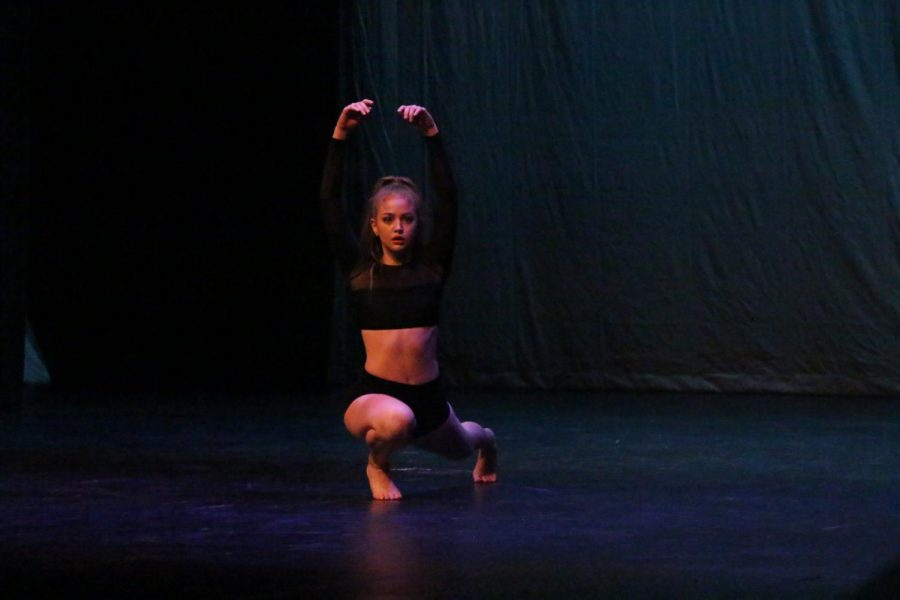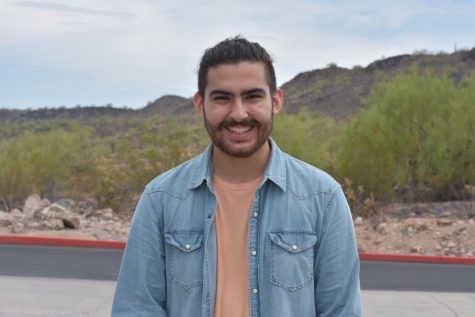Dance expresses their desire for adventure
Abby Fineberg, sophmore, performs a dramatic contemporary piece at the travel-themed 2017 winter dance concert.
January 11, 2018
Dance can be expressed in many forms and styles, contemporary and classical alike, both have their place. While it isn’t the most discussed event on campus, it has the potential to be. It is because of the wide diversity that comes with dance that it is seen as off-putting to some, while in actuality it offers a more inclusive, real experience that gives different things to different people.
The three-day long dance concert is under the most contrived of circumstances, and it is the most controversial undiscussed event on campus. People only look at it at surface-level, they don’t take the time to actually analyze the movement performed; it’s a fine art, almost everything is intentional and had clear purpose put in it by the creator.
The quality is very good, considering that half of the show was choreographed by the students themselves. But the tone shifted too much in between each and every song. Going from slow-melodic-introspective to fast-paced-upbeat got very tiring after the first act, even if every standalone piece was worth watching.
The best pieces stand-out by being the most memorable of the show in its entirety. The first act, while having a very flashy and interesting theme, a road trip across the United States, ultimately was the weaker of the two halves. The choice of song only fit the theme, and by doing so it restricted the emotional potential that the dancing itself could of had.
If there had to be any exception to the case it would have to be Chicago as a whole. The song and aesthetic was reminiscent of an era long passed, the 1950s. The crack and pop from warm sounding vinyl, the casual wearing of suit and tie, this song takes place in another time and every other variable capitalizes off of it.
Viva Las Vegas was the other song in the first half being the most memorable, and in many respects its similar to Chicago. It has a restricting theme, but the dancers know how to make the most from it, and it offers a unique perspective coupled with a clear distinctive aesthetic. It also adds to this formula by making the dancing itself reminiscent of Las Vegas.
The second half is much more complicated. Each and every song is independent from one another, and don’t have a central theme to conform to. This means they have, as a whole, more artistic creativity. But there are caveats to this system as well, because there isn’t one central theme the tonal shift from one song to the next can be very drastic at times leading to a sense of dissonance for the entire act.
In spite of this many more songs stuck out, Run, Run Rudolph fit the timing of the season perfectly, and being close to the beginning, didn’t clash with any of the other pieces. Stupid and Move Together fall into their own category, and they tell a story in a real and authentic way. By using the song to its fullest potential they can each capture the essence of their respective themes.
Alongside those stated previous, Running Away tells a very vivid story, but shows it as well, and it’s that key element of performing what the music says, in a unique interpretation that many other songs just didn’t really achieve. While not being necessary it adds a great deal of weight to the emotion impact.
The dance concert did strain and wane at times. But even through facing technical issues, the overall quality was equal in calibre to other fine art performances; while offering a unique sense of art that no one really seems to be discussing on campus. It seems to be the only fine art on campus left out of the public eye.



